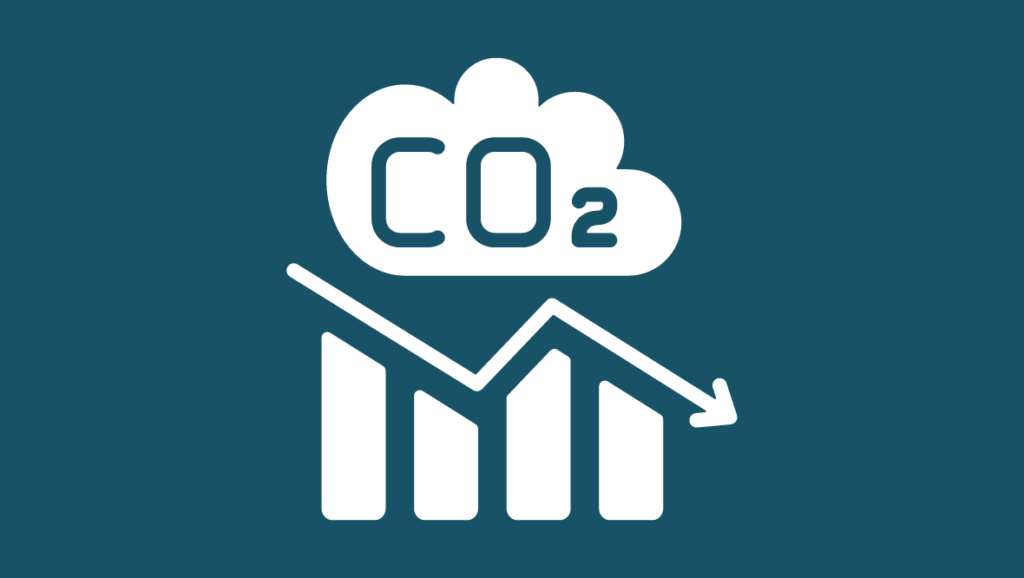The 3 Scopes of GHG Emissions: A Guide for Businesses

Delve deeper into GHG emissions with our guide, understanding Scopes 1, 2, and 3 to equip businesses with implementable sustainability insights.
A company’s greenhouse gas (GHG) emissions constitute a critical metric in evaluating its environmental impact. Given that businesses contribute significantly to climate change, understanding, measuring, and mitigating emissions has become fundamental to the overall sustainability performance of an organization.
Measuring corporate emissions provides a quantifiable indicator of a company’s environmental footprint, reflecting its contribution to climate change. The process involves assessing direct emissions (Scope 1) resulting from owned or controlled sources like industrial processes and transportation, as well as indirect emissions (Scopes 2 and 3) originating from purchased energy, supply chains, and other external factors.
In this article, we provide a comprehensive breakdown of the three scopes under which emissions are categorized and what their measurement entails.

Why measure your business’s GHG emissions
Companies have compelling reasons to engage in emissions measurement. Firstly, it aligns with global sustainability goals, demonstrating commitment to environmental stewardship. Moreover, stakeholders, including investors, consumers, and regulators, increasingly demand transparency regarding corporate environmental performance. Emissions measurement facilitates compliance with regulatory requirements and positions a company as a responsible corporate citizen.
Beyond regulatory compliance, emissions measurement equips businesses with valuable insights. It identifies emission hotspots in operations, allowing targeted efforts to reduce carbon-intensive activities. This not only mitigates environmental impact but also often leads to operational efficiencies and cost savings. Additionally, publicizing emissions reduction efforts can enhance a company’s brand image and attractiveness to environmentally conscious consumers and investors.

Scope 1: Direct emissions from your own activities
Scope 1 emissions are direct greenhouse gas (GHG) emissions that occur from sources owned or controlled by a company. These emissions result from activities such as the combustion of fossil fuels, on-site industrial processes, and any other direct emission source under the organization’s control.
Examples of Scope 1 emissions:
- Combustion of Fuels: This involves burning fossil fuels for heating, electricity generation, or operating company-owned vehicles. It encompasses emissions from facilities like boilers, furnaces, and company-owned vehicles that use gasoline or diesel.
- Industrial Processes: Certain industrial activities, especially those involving chemical reactions, may release GHGs directly. For instance, the production of cement releases carbon dioxide (CO2) as a byproduct.
Measuring Scope 1 Emissions
Measuring Scope 1 emissions involves quantifying the amount of GHGs released directly from these owned or controlled sources. While it is preferable to have this emissions data directly from the source using relevant meters etc. it is possible to calculate emissions even without it and is common practice. This is done using emission factors, which are coefficients that relate the amount of emitted greenhouse gases to a specific unit of activity (e.g., CO2 emitted per unit of fuel burned).
In order for companies to track their performance and ensure that their actions do reduce their GHG emissions, they must measure them by developing a GHG inventory, a list of the sources of their GHG emissions and their quantities. This inventory is the foundation of an effective corporate climate change program. Measurement enables businesses to assess their risks and opportunities, follow their progress, and create a strategy to reduce emissions by measurable amounts.
Hot Climate, Cool Commerce, A Service Sector Guide to Greenhouse Gas Management, World Resources Institute (WRI)

Scope 2: Indirect emissions from purchased energy
Scope 2 emissions are indirect greenhouse gas (GHG) emissions that result from the generation of purchased or acquired electricity, cooling, heat, or steam. Unlike Scope 1 emissions that come directly from owned or controlled sources, Scope 2 emissions are associated with the production of the energy consumed by an organization.
Examples of Scope 2 emissions:
- Purchased Electricity: Most commonly, Scope 2 emissions arise from the purchase of electricity from the grid. The type of energy mix in the grid, including the proportion of renewable and non-renewable sources, significantly influences the carbon intensity of these emissions.
- Purchased Heat, Cooling or Steam: In some cases, companies may purchase heat, cooling or steam as forms of energy. The emissions associated with these purchases fall under Scope 2.
Measuring Scope 2 emissions
This involves calculating the carbon intensity of the purchased energy, often expressed as emissions per unit of electricity (e.g., kilograms of CO2 per kilowatt-hour). This calculation considers the emissions generated during the production of the purchased energy, providing an indirect but critical metric for a company’s environmental impact.

Scope 3: All other indirect emissions
Scope 3 emissions are indirect greenhouse gas (GHG) emissions that result from a company’s value chain activities but occur from sources not owned or controlled by the reporting organization. These emissions often represent the largest portion of a company’s overall carbon footprint, encompassing a broad spectrum of activities throughout the supply chain.
Subcategories of Scope 3 emissions:
- Upstream Emissions: This involves emissions associated with the extraction, production, and transportation of purchased goods and services. For instance, a company’s Scope 3 emissions may include the carbon footprint of raw materials used in manufacturing.
- Downstream Emissions: These occur after the product leaves the company’s control. It includes activities such as product transportation, distribution, use by consumers, and end-of-life disposal or recycling. For example, emissions from customer use of a company’s products (e.g., energy use of appliances) fall under Scope 3.

Examples of Scope 3 emissions:
- Purchased Goods and Services: This specific category focuses on emissions associated with the products and services a company buys, incorporating the upstream and downstream life cycle of these goods and services.
- Business Travel: Emissions from employee travel, including flights, rental cars, and accommodation, are part of Scope 3.
Measuring Scope 3 emissions
Measuring Scope 3 emissions is challenging due to the vast and complex nature of these indirect sources. The Greenhouse Gas Protocol, a widely recognized standard for GHG accounting, is one of the standards that provides detailed guidance on assessing Scope 3 emissions. Their Corporate Value Chain (Scope 3) Standard is an excellent free of cost resource that provides a comperehsive framework for calculating Scope 3 emissions.
A big challenge faced in measuring Scope 3 emissions is the lack of data, especially for companies that are just beginning to measure their emissions. Therefore companies often use a tiered approach for measurement, focusing on the most material and impactful sources first.


